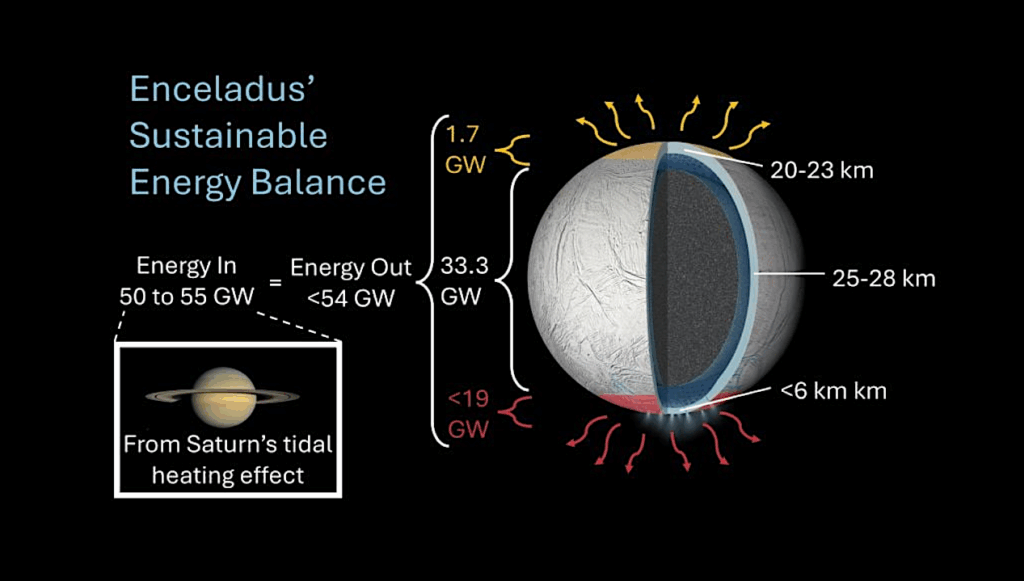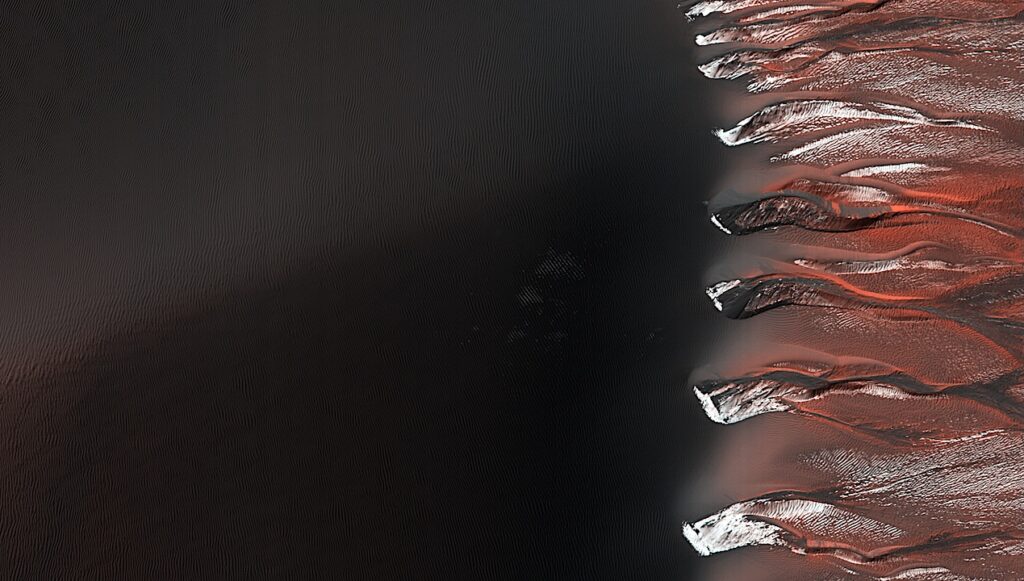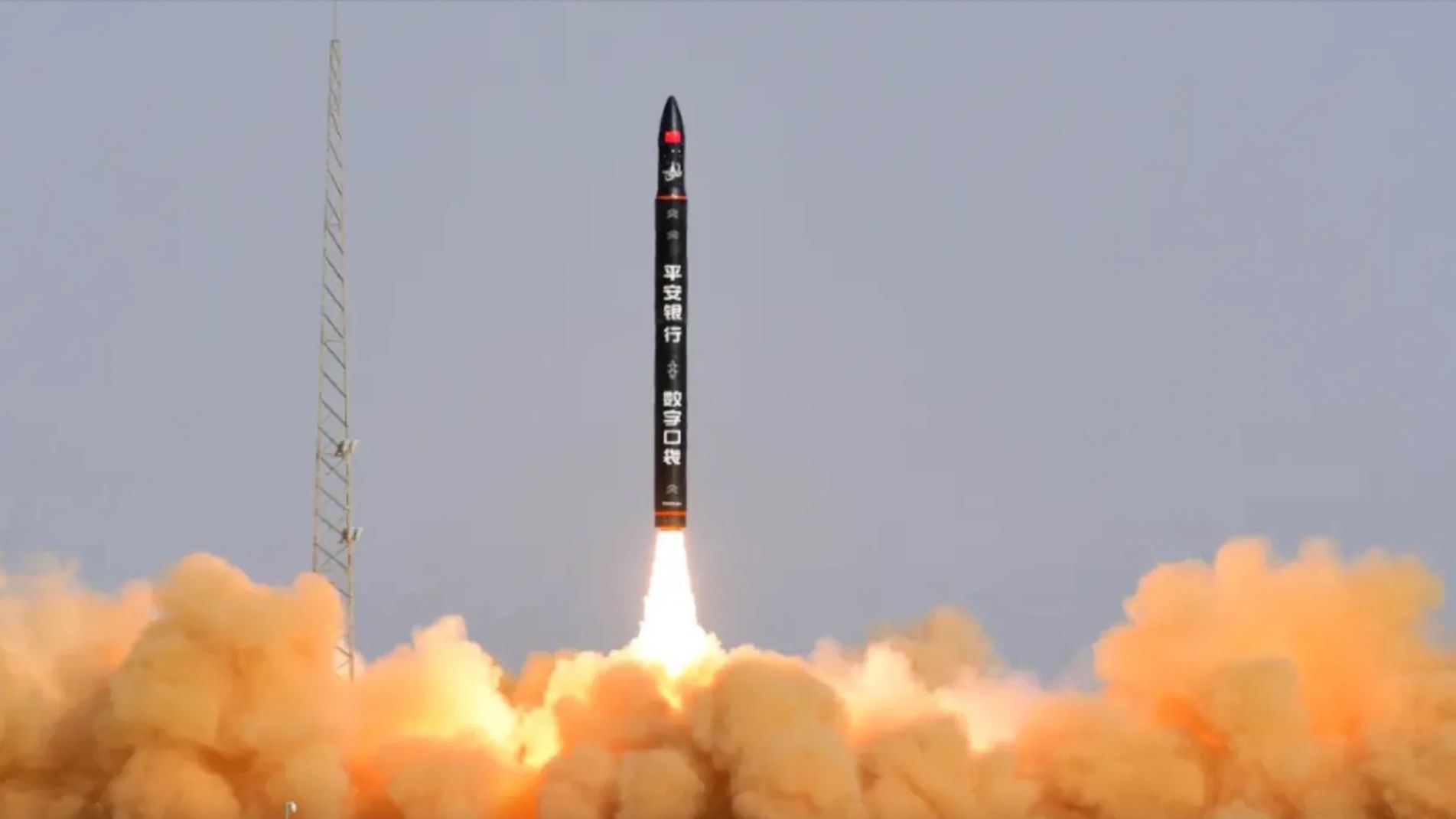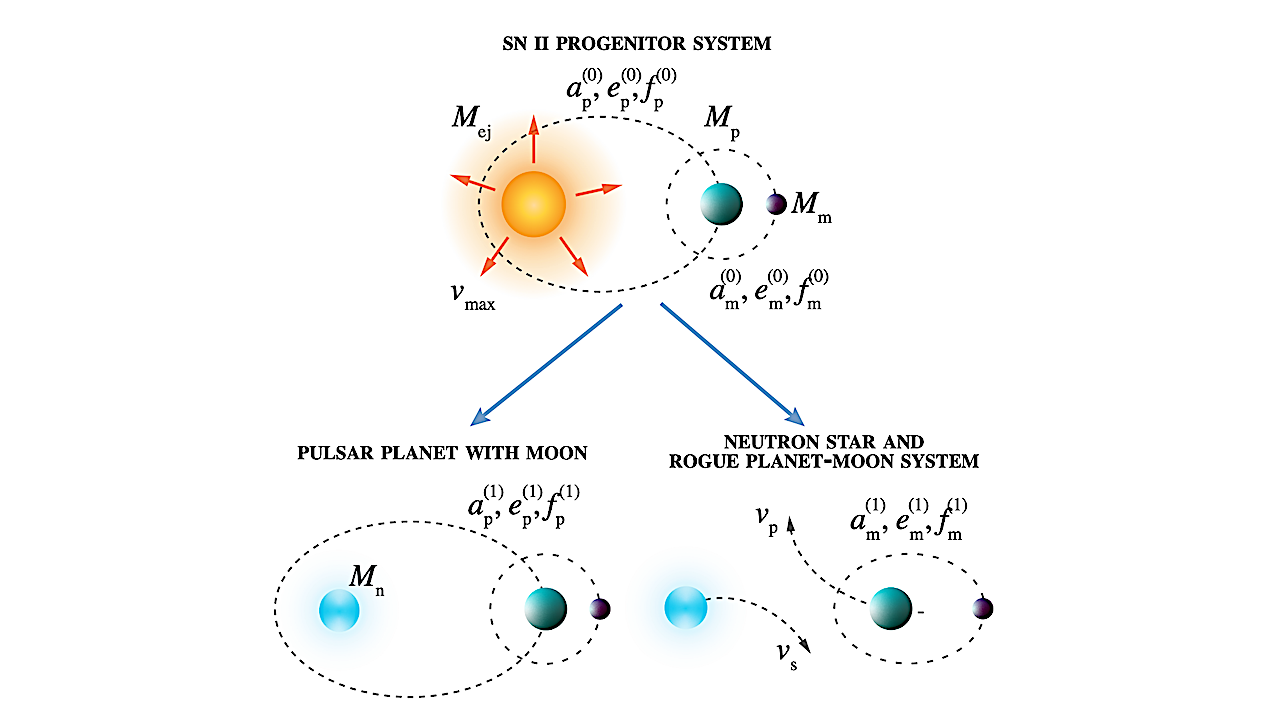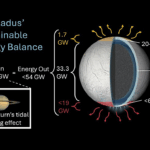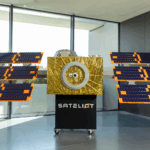Now Reading: Precise Mass And Radius Determination For Two New And One Known Neptune-sized Planets Around G Dwarf Hosts
-
01
Precise Mass And Radius Determination For Two New And One Known Neptune-sized Planets Around G Dwarf Hosts
Precise Mass And Radius Determination For Two New And One Known Neptune-sized Planets Around G Dwarf Hosts
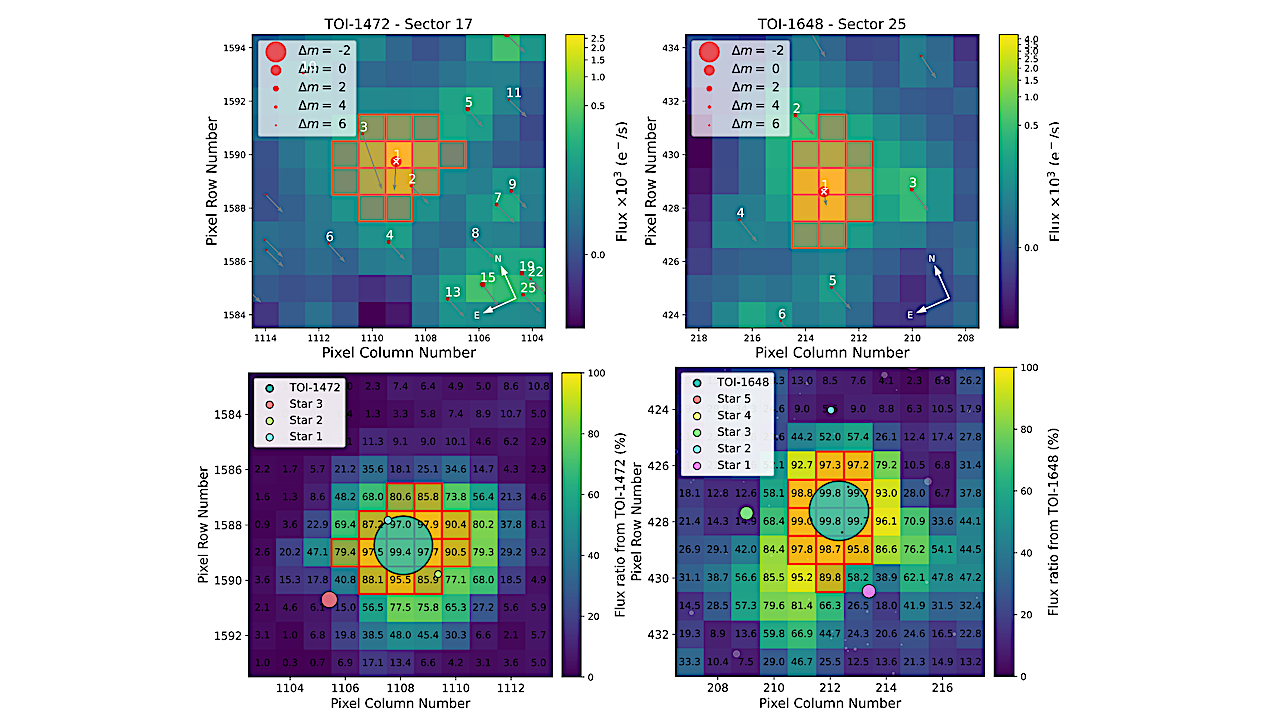

Upper: TESS TPF (Target Pixel Files) of Sector 17 for TOI-1472, and Sector 25 for TOI-1648. The color scale represents electron counts per pixel. Orange squares mark the pixels selected by the TESS pipeline for aperture photometry. Gaia DR3 sources are overlaid as circles with sizes corresponding to their G-band magnitude difference relative to the target, as indicated in the legend. This visualization was created using the tpfplotter code (Aller et al. 2020). Gray arrows show the proper motion vectors of all sources in the field. Bottom: TESS heatmaps for the two targets, produced with TESS-cont (Castro-González et al. 2024b), illustrating the percentage of the target star’s flux contained within each pixel. — MNRAS
As part of the KESPRINT collaboration, we present the discovery and characterization of three exoplanets in the sub-Neptune to super-Neptune regime, spanning key regions of the exo-Neptunian landscape.
TOI-1472 c and TOI-1648 b are newly discovered sub-Neptunes, while TOI-1472 b is a previously known super-Neptune for which we provide an improved mass measurement. These planets have orbital periods of 6–15 days and radii of 2.5–4.1 R⊕, probing regions where planet formation and atmospheric evolution remain poorly understood. We combine TESS transit photometry with ground-based radial velocities to determine precise masses, radii, and orbital properties.
TOI-1472 b has a mass of M⊕ and a radius of 4.06 ± 0.10 R⊕, TOI-1472 c has a mass of M⊕ and a radius of 3.33 ± 0.08 R⊕, and TOI-1648 b has a mass of M⊕ and a radius of R⊕. The planets exhibit a range of eccentricities (0.041–0.178), indicating diverse evolutionary histories. TOI-1648 b, with a high Transmission Spectroscopy Metric (TSM ∼59), is a promising target for atmospheric characterization.
Together, these three planets provide precise constraints on the structure, composition, and dynamical evolution of small to intermediate-sized exoplanets, enriching our understanding of the exo-Neptunian landscape.
Precise Mass And Radius Determination For Two New And One Known Neptune-sized Planets Around G Dwarf Hosts, Monthly Notices of the Royal Astronomical Society (open access)
Astrobiology, Exoplanet,
Stay Informed With the Latest & Most Important News
Previous Post
Next Post
-
 012024 in Review: Highlights from NASA in Silicon Valley
012024 in Review: Highlights from NASA in Silicon Valley -
 02Panasonic Leica Summilux DG 15mm f/1.7 ASPH review
02Panasonic Leica Summilux DG 15mm f/1.7 ASPH review -
 03How New NASA, India Earth Satellite NISAR Will See Earth
03How New NASA, India Earth Satellite NISAR Will See Earth -
 04And Thus Begins A New Year For Life On Earth
04And Thus Begins A New Year For Life On Earth -
 05Astronomy Activation Ambassadors: A New Era
05Astronomy Activation Ambassadors: A New Era -
06SpaceX launch surge helps set new global launch record in 2024
-
 07Space Force plans new ‘Futures Command’ amid pressure to speed up modernization
07Space Force plans new ‘Futures Command’ amid pressure to speed up modernization













